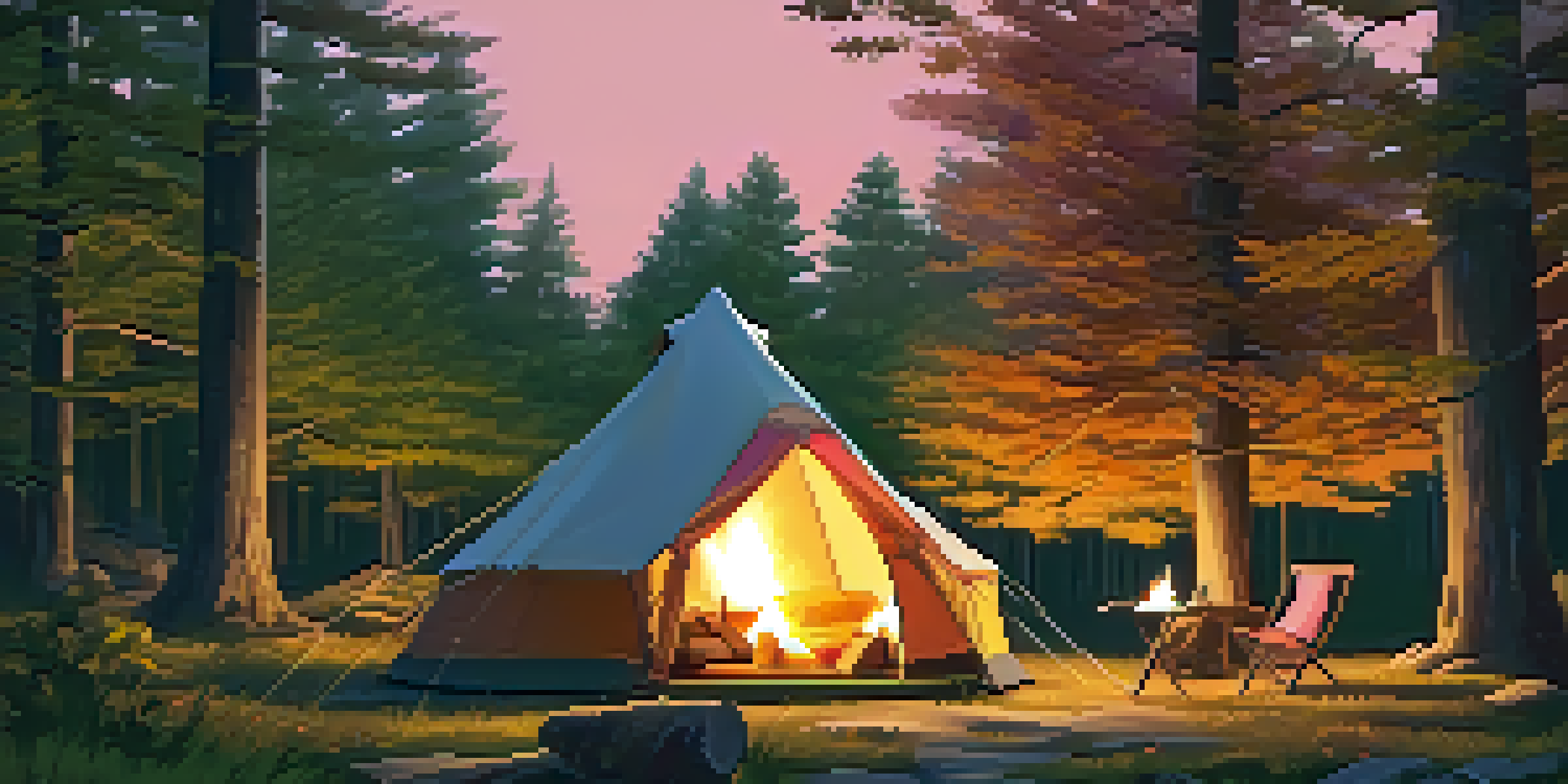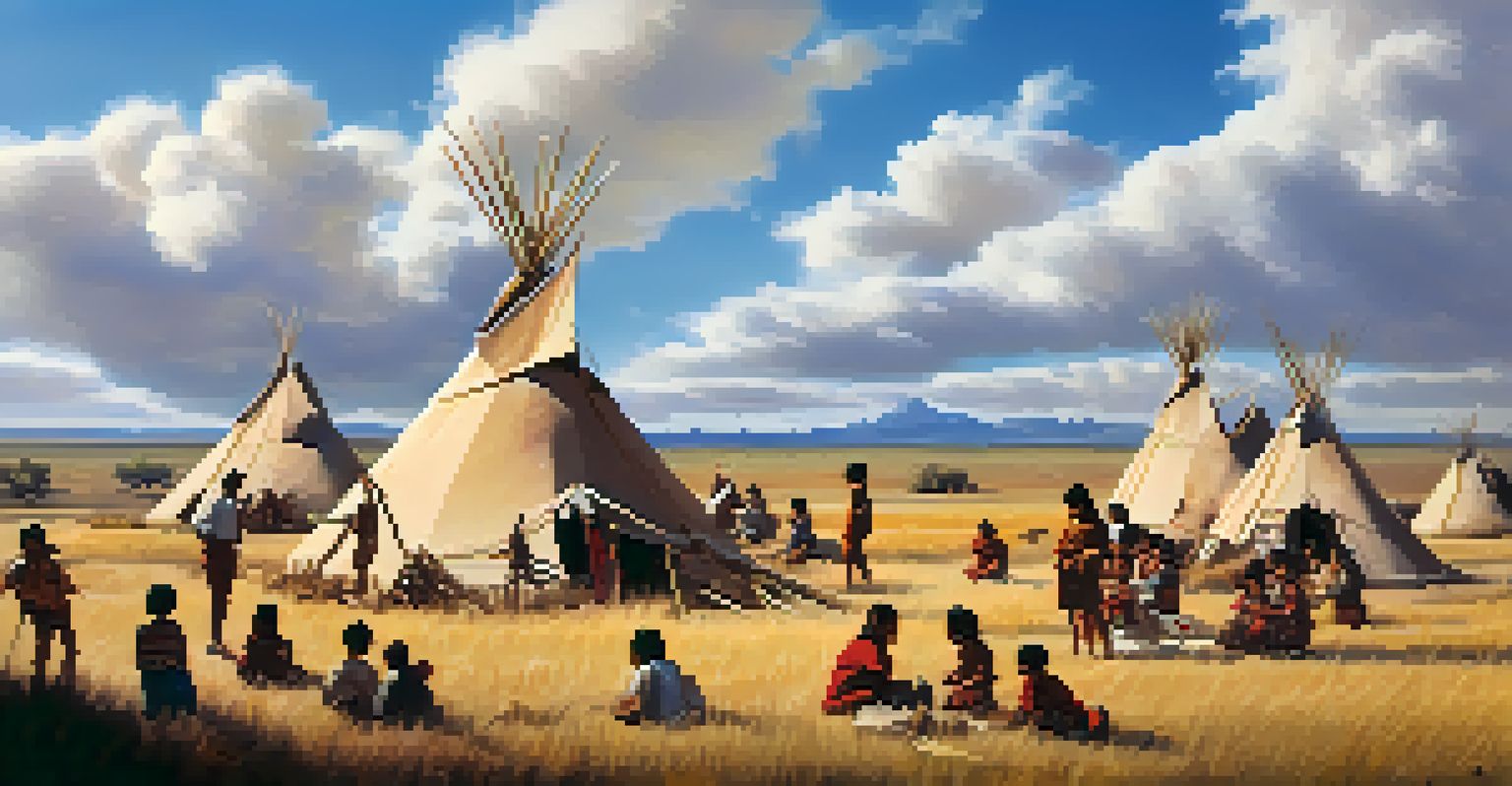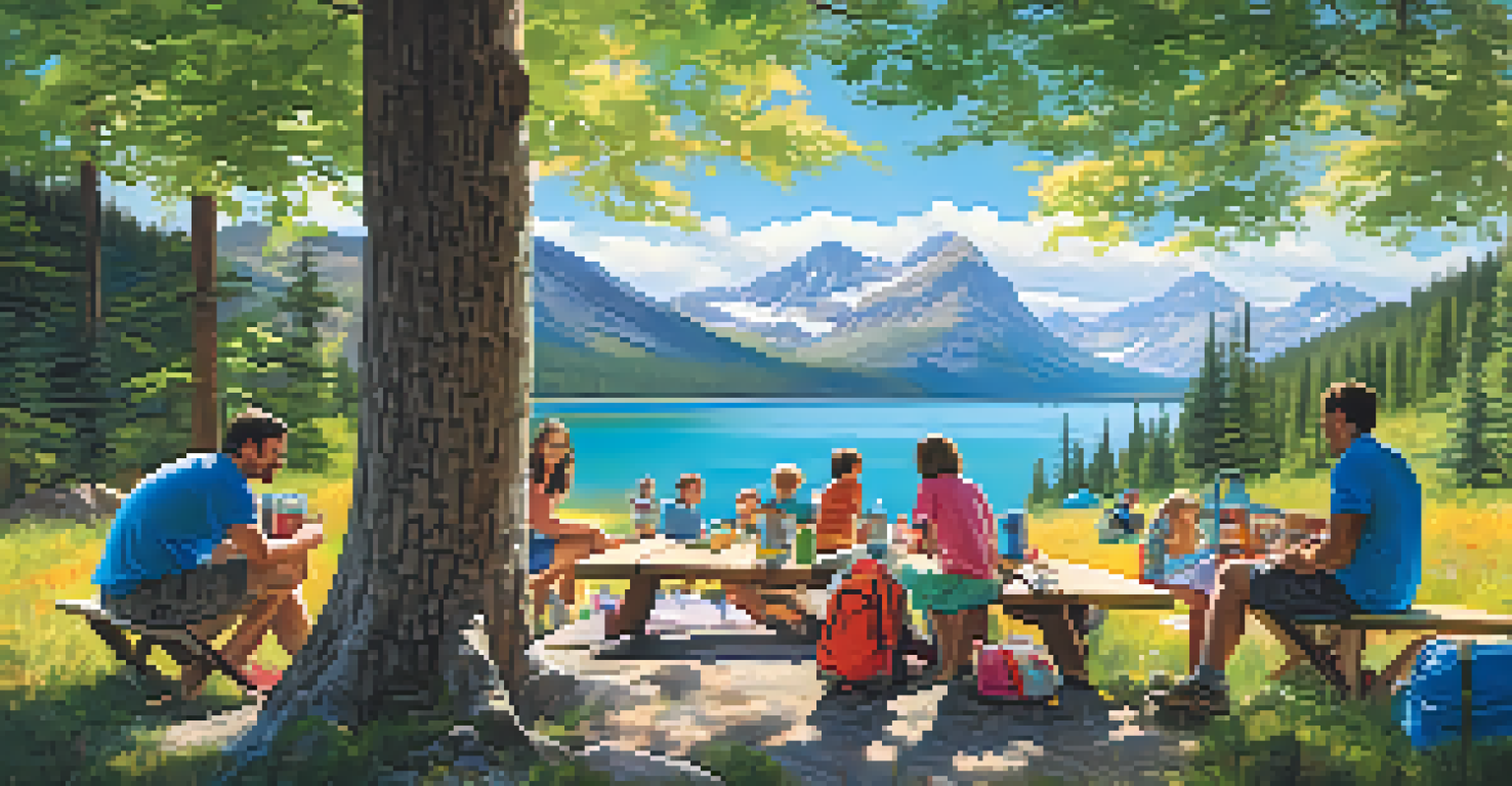Camps and Encampments: A Glimpse into Historical Living

Understanding the Concept of Camps and Encampments
Camps and encampments have served as temporary shelters for various groups throughout history, from nomadic tribes to military armies. They represent a unique blend of mobility and community, allowing people to adapt to their environments while maintaining social structures. The layout and purpose of these sites often reflect the needs and lifestyles of those who inhabit them, making them fascinating subjects for historical study.
Camping is nature’s way of promoting the motel business.
For instance, a military encampment might be organized for efficiency and defense, with tents arranged in a specific formation. In contrast, a nomadic camp may prioritize flexibility, allowing for easy relocation as resources change. This adaptability is crucial, especially in challenging terrains where survival depends on quick responses to environmental shifts.
Ultimately, camps and encampments reveal much about human resilience and ingenuity. They serve as microcosms of society, where individuals come together, share resources, and create cultures that can thrive even in transient situations.
The Role of Camps in Military History
Throughout history, military camps have played a pivotal role in shaping battles and strategies. These encampments served not only as shelters but also as command centers where leaders devised plans and coordinated troops. The strategic placement of these camps often influenced the outcomes of conflicts, as they provided soldiers with security and resources.

Take, for instance, the famous Roman legions, which established fortified camps at the end of each day's march. These camps were meticulously designed for defense and efficiency, showcasing Roman engineering prowess. The layout of these encampments made it easier to train troops, store supplies, and prepare for the next day's engagements.
Camps Reflect Human Ingenuity
Camps and encampments showcase human resilience and adaptability, serving as temporary shelters that foster community and culture.
Moreover, the evolution of military camps over time reflects advancements in technology and tactics. From the simple tents of ancient warriors to the sophisticated bases of modern armies, these encampments have continually adapted to meet the demands of warfare, highlighting the intricate relationship between environment, strategy, and human ingenuity.
Camps as Centers of Culture and Community
Beyond their practical uses, camps and encampments have historically fostered rich cultural exchanges. When diverse groups come together, whether for trade, military alliances, or social gatherings, a unique blend of customs, languages, and traditions emerges. This cultural melting pot contributes to the development of new identities and shared experiences.
In every walk with nature one receives far more than he seeks.
For example, the gatherings of Native American tribes at seasonal camps facilitated the exchange of goods, stories, and traditions. These interactions not only strengthened community ties but also enriched their cultural heritage, leading to a more profound understanding among different groups. Such camps became vibrant places where art, music, and oral histories were shared, creating lasting legacies.
In this way, camps function as vital social hubs, enabling individuals to forge connections and collaborate in meaningful ways. The communal aspect of encampments reminds us of the importance of human interaction, even in the most transient of settings.
The Evolution of Camping Practices Over Time
Camping practices have transformed significantly over the centuries, evolving from basic survival techniques to recreational activities enjoyed by millions today. Early humans camped primarily out of necessity, seeking refuge from harsh elements while hunting and gathering. Over time, this practice morphed into a lifestyle choice for many, reflecting the changing relationship between people and nature.
In the 19th century, the rise of the industrial revolution brought about a new appreciation for the outdoors, leading to the emergence of organized camping. Groups began to venture into nature for leisure, seeking respite from urban life. This shift not only popularized camping as a recreational activity but also laid the foundation for the establishment of national parks and campgrounds.
Camps Adapt to Changing Needs
The evolution of camping practices demonstrates a shift from survival techniques to recreational activities that highlight our connection with nature.
Today, camping encompasses a wide variety of experiences, from luxury glamping to traditional tent camping. This evolution illustrates our ongoing desire to connect with nature, an enduring theme that transcends time and highlights the importance of outdoor experiences in our lives.
Camps and Encampments in Indigenous Cultures
Indigenous cultures around the world have long embraced the concept of camps and encampments, using them to sustain their way of life in harmony with nature. Many Indigenous groups practiced seasonal migration, establishing temporary camps that allowed them to follow animal migrations and harvest seasonal plants. These camps were not just places to sleep; they were integral to their cultural identity and survival.
For example, the Plains tribes of North America relied on portable tipis that could be easily assembled and disassembled as they followed buffalo herds. These structures exemplified their deep understanding of the environment and resource management, showcasing their adaptability and resilience. Each camp was a reflection of their values, traditions, and social structures.
The significance of these camps extends beyond mere practicality; they represent a profound connection to the land and a commitment to preserving cultural heritage. As modern challenges arise, many Indigenous communities continue to uphold these traditions, reminding us of the importance of respecting and learning from diverse ways of living.
Modern-Day Camping and Its Implications
In today's fast-paced world, modern camping has taken on new meanings and implications. It serves as a form of escapism, allowing people to disconnect from technology and reconnect with nature. This desire for outdoor experiences can be seen in the rise of camping festivals, outdoor retreats, and a growing interest in wilderness survival skills.
However, modern camping also raises important environmental considerations. As more people flock to natural areas, the impact on ecosystems becomes a significant concern. Sustainable camping practices, such as Leave No Trace principles, have emerged to encourage responsible outdoor ethics and ensure that future generations can enjoy these precious landscapes.
Modern Camping Emphasizes Sustainability
As modern camping grows in popularity, it also raises environmental concerns, prompting the need for sustainable practices to protect natural landscapes.
Ultimately, modern camping reflects our evolving relationship with the environment. It challenges us to consider how we can enjoy the outdoors while protecting the natural world, fostering a sense of stewardship that is crucial in today's climate-aware society.
The Future of Camps and Encampments
Looking ahead, the future of camps and encampments is likely to be shaped by technological advancements and changing societal values. With the rise of remote work and digital nomadism, more people may seek out camping experiences as a means to blend work and leisure while enjoying the beauty of nature. This shift could lead to an increase in eco-friendly campgrounds and innovative camping solutions.
Moreover, as climate change continues to impact our environment, the design and management of camps will need to adapt accordingly. This may involve creating more resilient structures that can withstand extreme weather or developing sustainable practices that minimize the ecological footprint of camping activities. Collaboration between campers, local communities, and environmental organizations will be crucial in shaping this future.

In essence, the future of camps and encampments holds exciting possibilities. As we navigate these changes, it will be essential to honor the traditions of the past while embracing new ways to experience and protect our natural world.